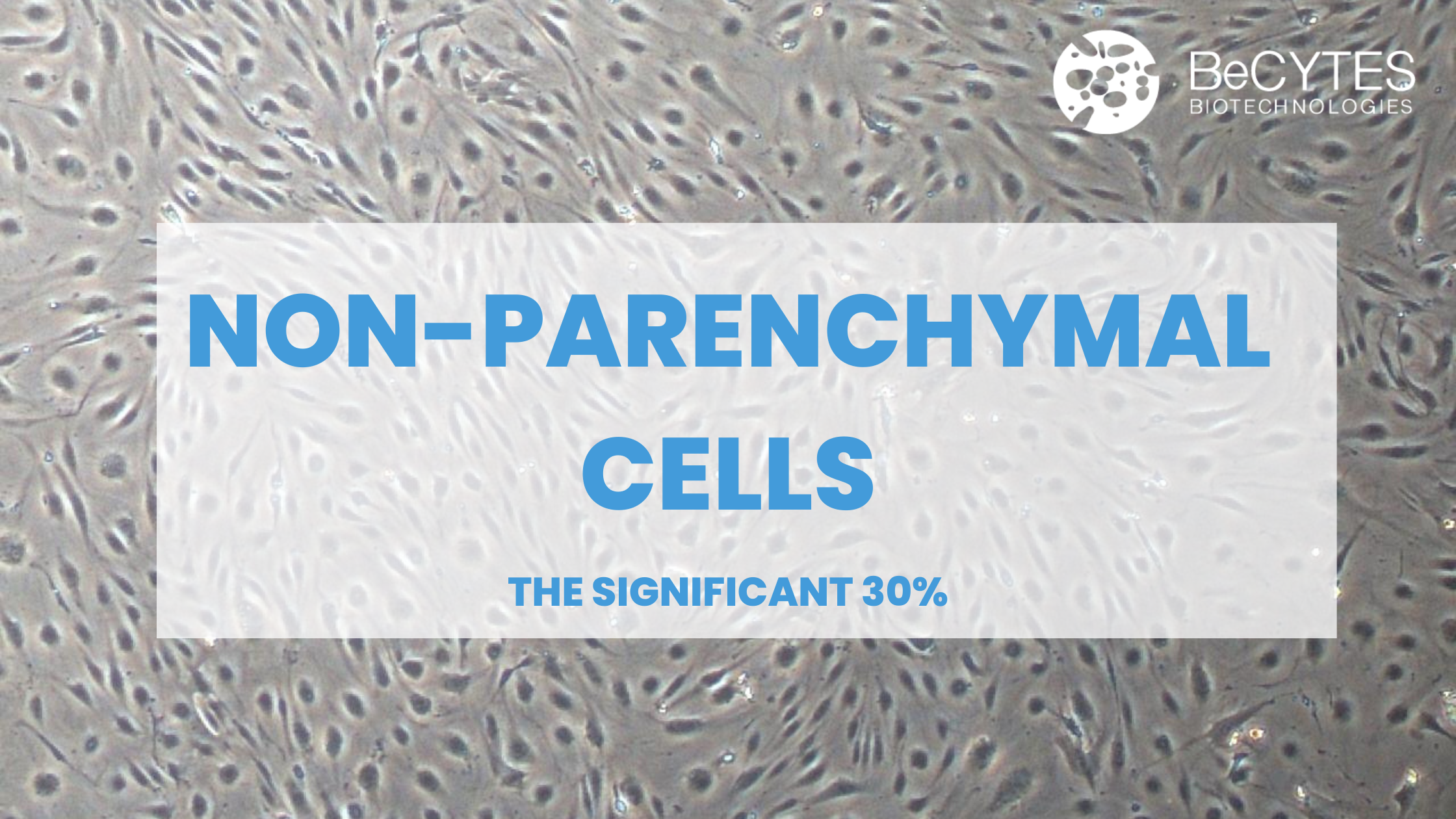
Non-Parenchymal Cells: The Significant 30%
Non-Parenchymal Cells: The Significant 30%
The liver is a complex organ comprising hepatocytes, which represent approximately 70% of its total cell population. What about the other 30%?
Non-parenchymal cells (NPCs) represent the remaining fraction and include liver endothelial sinusoidal cells, Kupffer cells, stellate cells, lymphocytes, and cholangiocytes, among other minoritarian subsets.
Many in vitro models to study liver functions, such as metabolism analysis, toxicity assays, or enzyme activity studies, tend to simplify using only hepatocytes. While it is a good starting point, non-including NPCs reduces the complex interplay among different cell types coexisting in the liver and has its consequences.
What are the advantages of including NPCs in in vitro liver models?
Recent research indicates that the interaction between cells and their surrounding matrix, cell-to-cell communication, and the influence of soluble factors are all crucial for sustaining the functionality of liver cells in an in vitro setting. It is advisable to culture hepatocytes in conjunction with NPCs since it is always better for the long-term maintenance of hepatocytes and a better understanding of the liver microenvironment. Both the hepatic numbers and function have been reported to improve due to the co-culturing with the liver NPCs.
It has been reported that the co-culture method increases the expression of CYP and Phase II isoforms compared to monotypic culture. Also, NPCs’ presence helps to recover hepatocyte morphology, bile canaliculi, and cell-cell contacts.
How BeCytes can help you replicate complex liver microenvironments
Reliable models that mimic the structure of the liver are essential for drawing reliable conclusions from preclinical in vitro assays. Non-parenchymal cells allow the creation of advanced liver models, including those with hepatic-like environments and co-cultures, which are essential for accurate predictive responses for studying liver physiology/pathology and conducting drug screenings. They offer increased sensitivity and the ability to manipulate various conditions and analyze multiple parameters.
BeCytes NPCs mix provides a mixture of different types of non-parenchymal liver cells, such as Kupffer cells, liver endothelial cells, and hepatic stellate cells, in their native cell ratios. From basic to more advanced characterization, we determine the expression of characteristic NPCs markers by flow cytometry to ensure the presence of the three different cell types. NPCs are produced under rigorous QC Standards and supplied with specific certificates of analysis, with culture and maintenance protocols, and specific NPCs thawing media.
We empower researchers to develop sophisticated cellular models that replicate the complex microenvironment of the human body.
Do you need more info? Take a look at our portfolio!
References
Godoy P, Hewitt NJ, Albrecht U, et al. Recent advances in 2D and 3D in vitro systems using primary hepatocytes, alternative hepatocyte sources, and non-parenchymal liver cells and their use in investigating mechanisms of hepatotoxicity, cell signaling, and ADME. Arch Toxicol. 2013;87(8):1315-1530. doi:10.1007/s00204-013-1078-5
Gómez-Lechón MJ, Tolosa L, Conde I, Donato MT. Competency of different cell models to predict human hepatotoxic drugs. Expert Opinion on Drug Metabolism & Toxicology. 2014;10(11):1553-1568. doi:10.1517/17425255.2014.967680
Kaur I, Vasudevan A, Rawal P, et al. Primary Hepatocyte Isolation and Cultures: Technical Aspects, Challenges and Advancements. Bioengineering. 2023;10(2):131. doi:10.3390/bioengineering10020131





